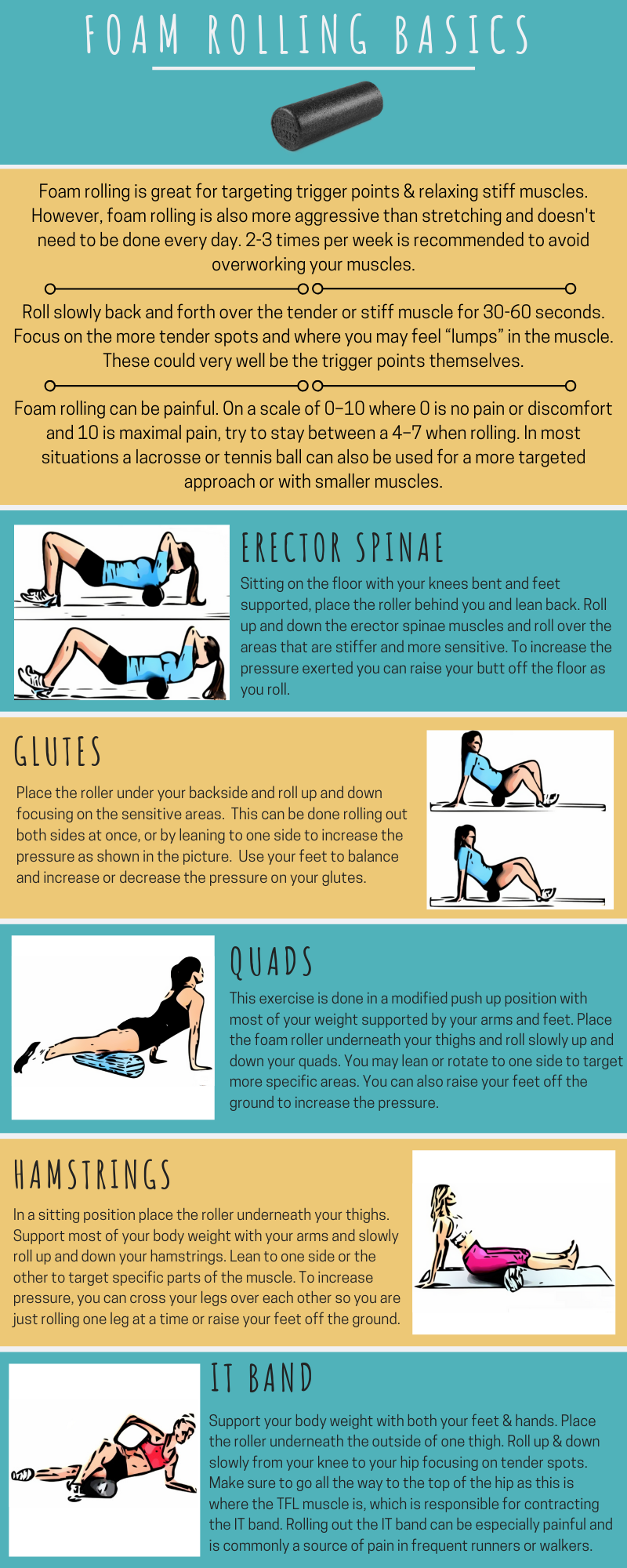To share this image on your website, copy the embed code below:
Foam rolling is great for targeting trigger points and relaxing stiff muscles. However, foam rolling is also more aggressive than stretching and does not need to be done every day. Two to three times per week is recommended to avoid overworking your muscles.
Roll slowly back and forth over the tender or stiff muscle for thirty to sixty seconds. Focus on the more tender spots and where you may feel “lumps” in the muscle. These could very well be the trigger points themselves.
Foam rolling can be painful. On a scale of 0–10 where 0 is no pain or discomfort and 10 is maximal pain, try to stay between a 4–7 when rolling. In most situations a lacrosse or tennis ball can also be used for a more targeted approach or with smaller muscles.
Erector Spinae
Sitting on the floor with your knees bent and feet supported place the roller behind you and lean back. Roll up and down the erector spinae muscles and roll over the areas that are stiffer and more sensitive. To increase the pressure exerted you can raise your butt off the floor as you roll.
Glutes
Place the roller under your backside and roll up and down focusing on the sensitive areas. This can be done rolling out both sides at once or by leaning to one side to increase the pressure as shown in the picture. Use your feet to balance and increase or decrease the pressure on your glutes.
Quads
This exercise is done in a modified push up position with most of your weight supported by your arms and feet. Place the foam roller underneath your thighs and roll slowly up and down your quads. You may lean or rotate to one side to target more specific areas. You can also raise your feet off the ground to increase the pressure.
Hamstrings
In a sitting position place the roller underneath your thighs. Support most of your body weight with your arms and slowly roll up and down your hamstrings. Lean to one side or the other to target specific parts of the muscle. To increase pressure, you can cross your legs over each other so you are just rolling one leg at a time, or raise your feet off the ground.
IT Band
Support your body weight with both your feet and hands. Place the roller underneath the outside of one thigh. Roll up and down slowly from your knee to your hip focusing on tender spots. Make sure to go all the way to the top of the hip as this is where the TFL muscle is which is responsible for contracting the IT band. *Rolling out the IT band can be especially painful and is commonly a source of pain in frequent runners or walkers.*
For more information about using a foam roller, feel free to call the Oakville Chiropractic Centre at 905-845-2291 or click here.





Leave a Reply